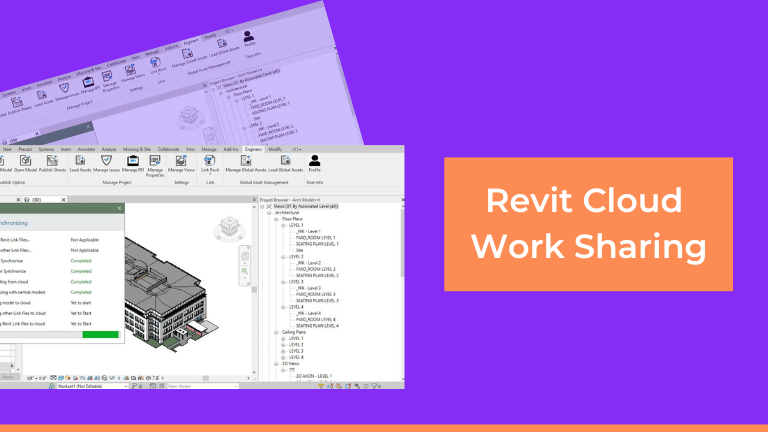Step into the future of Architectural innovation with Revit Cloud. Explore here, how the Revit Cloud, a revolutionary platform reshapes the architectural practice.
The architectural industry’s progression is determined by various factors, among which the innovations that take place at regular intervals are considered the most prominent.
The innovations in designs and deployment will enhance the quality of the architectural industry. Architectural software solutions at present are grooming the niche and producing impeccable results with ideation and execution.
Revit is one such eminent software to design and deploy vital designs in the industry. In this blog, we are about to explore the Revit cloud and its impact on catalyzing the future of architectural innovation.
Revit Cloud Work-Sharing
Revit is credible software built with the essence of designing ideal models and indeed giving value to them. One important aspect of any industry is streamlined coordination and collaboration, and the architectural industry demands it on a large scale as it determines the output of the project.
That said, Revit Cloud work-sharing is shaping collaboration and coordination on another scale, promoting impressive workflow to achieve ideal results with the model in less time, and setting the stage for proactive architectural innovation.

Collaboration and coordination in the Revit Cloud
Revit cloud work-sharing promotes collaboration and coordination on a wider scale, as the cloud space is feasible for multiple users’ indulgence.
Traditionally, a model designed by an individual designer cannot be accessed by any other user, and it consumes more time to create a design and deploy it, and connecting the designs with teams is not seamless.
Revit Cloud is a one-stop solution for this, where it lets users connect, work on a design, and progress it at a faster pace than conventional methods.
The Need for Collaboration in the Architectural Industry
Before speaking about Revit Cloud Worksharing in the architectural industry, we will first discuss the inevitability of coordination and collaboration in this genre of construction.
Each architectural project is diverse and unique, and therefore it involves multiple minds to connect and streamline the process.
Boosting the user’s connection to the project will enhance time management and eventually accelerate the result with esteemed quality.
The model that has been created by an architect has to be shared with the team and might undergo alterations if required.
Here is where the need for collaboration shines. While making changes to the model, it is important to protect the integrity of the model and therefore avoid misconceptions. To maintain the workflow, the team should be kept informed about the updates happening with the specific model, and this is possible only when they are connected at a central location.
To meet all these parameters, a cloud-based workflow prevails as an ideal solution, and, in that case, Revit Cloud is the best option out there to carry out vital actions to set things right on track for the architectural industry.
Perks of using Revit Cloud for architectural innovation
Architectural innovation depends on various factors, and when considering the factors, coordination and collaboration can be highlighted as the most prominent ones.
Revit cloud work-sharing is an eminent way to bring these factors to the table and therefore set the motion at the right pace. That said, using Revit cloud work-sharing has a series of benefits that catalyze architectural innovations, and we list them here.
- Since Revit Cloud has a centralized storage space, the files are saved and kept open for users, where they can access the model files in parallel with other users and co-author the model. This can be done anytime, from anywhere, which eventually reduces the time and costs spent.
- The architectural model can be synced as a central model, and when users make changes to the model design, it will be automatically updated, keeping the whole team aware of the changes made to the model.
- The model can be shared with secondary collaborators and users to extend the customization opportunities. While sharing the model, the user can select views, sheets, or the whole model to share. With these flexible publishing options, the Revit cloud will let the architectural models embrace more user interaction and ideas.
Wrapping up
Setting up the acceleration for architectural innovation with the Revit cloud will enhance the process of designing and implementing the models in the field. With enhanced collaboration and coordination, the users can express their ideas in a cloud space where every piece of data is noted and annotated for the future.
By now, you will have gained insight into using the Revit cloud for implementing architectural designs. Make a move now!



Leave a Reply